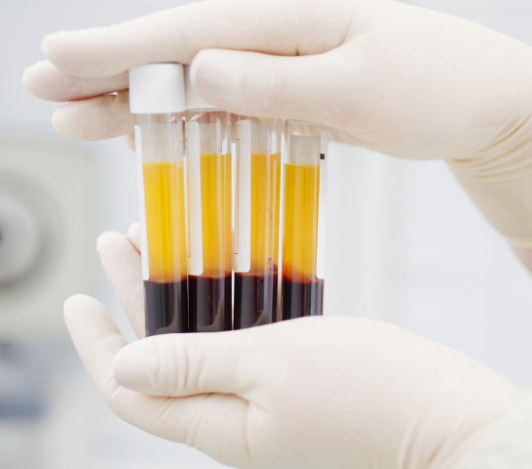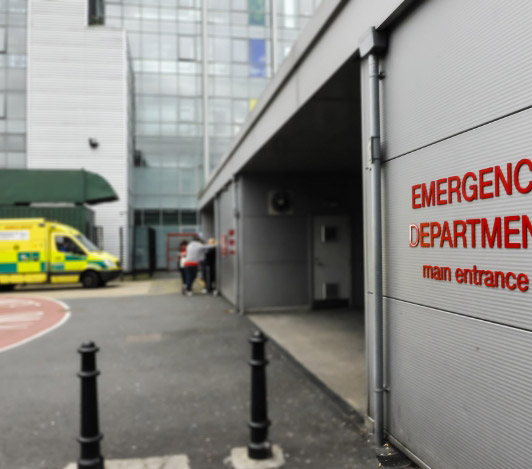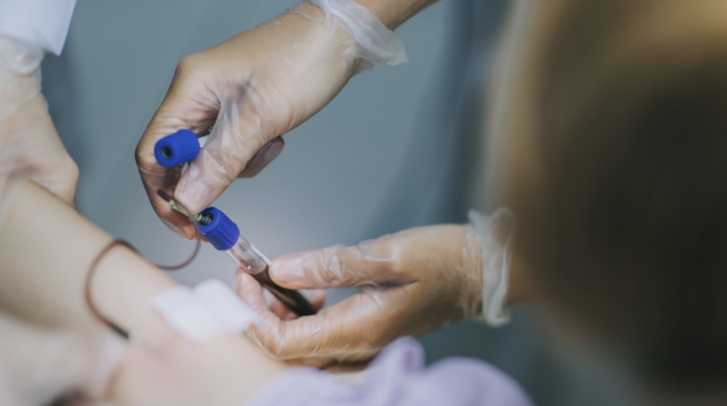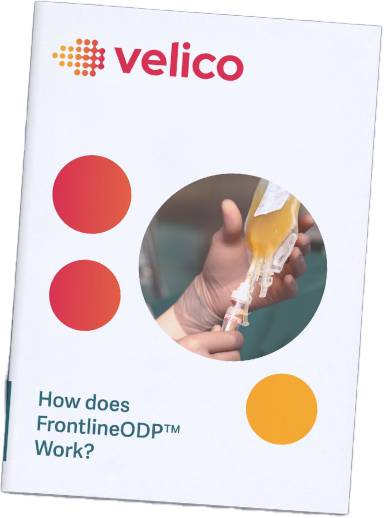Hospitals

Introduction to FrontlineODP™
The use of thawed plasma in the emergency department, allowing plasma to be used as a primary in-hospital resuscitation fluid, was associated with improved survival.
FrontlineODP™ requires less cold chain management, and offers a more rapid reconstitution process, which has the potential to improve inventory management and surge capability while also reducing logistical constraints of conventional plasma.
Stable and dry substance which has the potential shelf life of 2 years.
Why is it needed?
The leading cause of avoidable death in trauma patients is hemorrhage.† In contrast to the conventional wisdom on the "golden hour", peak mortality in patients with acute truncal bleeding happens at 30 min.† The median time to bleeding fatality for patients who make it to a hospital is 90–150 minutes after admission.† It is well recognized that a common path to fatal and irreversible shock is through the lethal triad of hypothermia, acidosis, and acute coagulopathy following trauma.
The optimum method for treating traumatic hemorrhage is damage control resuscitation (DCR) with blood components that mimic whole blood in the presence of permissive hypotension, avoiding crystalloid and colloid solutions. The best approach to avoid traumatic hemorrhagic death and prevent trauma induced coagulopathy (TIC) is rapid bleeding control followed by hemorrhage management. This strategy requires plasma transfusion. Dried plasma is a shelf-stable plasma product that is easy to transport and administer.
† Holcomb J. Transport time and preoperating room hemostatic interventions are important. Crit Care Med. 2018;46(3):447–53.
† Alarhayem A, Myers J, Dent D, Liao L, Muir M, Mueller D, et al. Time is the enemy: mortality in trauma patients with hemorrhage from torso injury occurs long before the “golden hour”. Am J Surg. 2016;212(6):1101–5.
† Holcomb J, del Junco D, Fox E, Wade C, Cohen M, Schreiber M, et al. The prospective, observational, multicenter, major trauma transfusion [PROMMTT] study. JAMA Surg. 2013;148(2):127.

Velico's® FrontlineODP™ Business Model
Velico's® business model will be based on partnerships with regional blood centers which collect, test and manufacture lifesaving blood components every day. Velico's® FrontlineODP™ system is being designed for straight-forward integration into existing blood centers.
The FrontlineODP™ development program is funded by the Biomedical Advanced Research and Development Authority (BARDA), within the Office of the Assistant Secretary for Preparedness and Response in the U.S. Department of Health and Human Services under contract No. 75A50121C00059.
Resulting Plasma

Resulting Plasma
Velico® is developing FrontlineODP™, a novel, platform technology for manufacturing spray dried human plasma. The FrontlineODP™ system is intended to be deployed at regional blood centers that will produce dry plasma for use by hospitals, emergency first responders and the military. Dry plasma overcomes the logistics of conventional frozen plasma and potentially extends the availability of plasma closer to the point of injury, including rural and austere settings. The resulting plasma units are compact and can be stored either refrigerated or at room temperature.
Reconstitution
FrontlineODP™ is easily reconstituted with 200 ml of sterile water for injection (SWFI), and ready for use within minutes, making it practical in prehospital settings where conventional plasma is unavailable.
Transfusion
Uncontrolled hemorrhage is recognized as the leading cause of potentially preventable death among victims of trauma.† The early administration of plasma has been shown to be lifesaving for many of these patients.
† Sperry JL, et al. Prehospital Plasma during Air Medical Transport in Trauma Patients at Risk for Hemorrhagic Shock. N Engl J Med. 2018 Jul 26;379(4):315-326
Want to learn more?
If you are a blood center, hospital, investor or interested in learning more about Velico®, please click the button below to submit a request.

